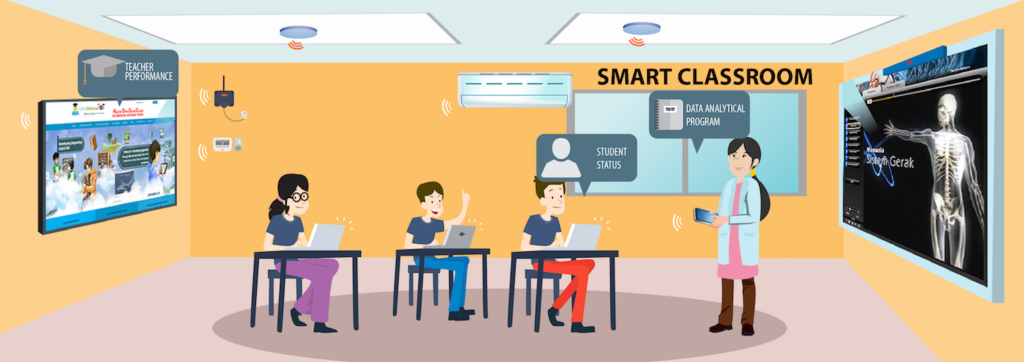
Education represents the greatest way we can ensure our continued technological and cultural growth. By ensuring that the next generation has the best possible tools and resources at their disposal, we create a foundation for future success. The Internet of Things (IoT) can provide us a way to measurably improve education for the long-term, without swallowing the budget.
How Can We Improve Education?
Methods designed to enhance the educational experience often seek to augment the quality of education or access to it, but fewer dramatically impact both simultaneously. Let’s look at some examples, considering the United States’ educational framework:
- Teachers: Hiring more teachers may increase access to education, but it will likely lead to a decrease in quality. Rapid hiring both is both detrimental to the quality of instruction and is not scalable as school districts have limited access to funding and administrative personnel.
- Textbooks: Purchasing new textbooks is costly and therefore limiting in terms of the quantity that can be purchased for students. On the other hand, buying used textbooks may be cheaper, thereby providing greater access to educational material. However, it also limits learning to older pedagogic modules and outdated information, which may stunt or even decrease educational quality.
- Reform: There’s a constant push for educational policy change at the local, state, and national government, yet the fight seems perennially futile. That’s not to say it’s fruitless; in fact, educational policy change can rapidly change lives for the better. Nonetheless, achieving greater funding and educational reform proves time-intensive and difficult due to a lack of bipartisanship. The goals of such initiatives are often to increase the quality of and access to education, but we need interim solutions while policy changes are delayed.
As we have seen, improving quality and access to education is no easy task. Increased hiring and spending are relatively straightforward processes once budgets allocate to these initiatives, but do they truly accomplish the goal of improving education? And if hiring and spending are not the answer, what is? I argue the answer is technology.
Where Technology and Education Meet
Technological enhancements have historically driven increases in the quality of and access to education globally. And out of all technologies that have impacted education, the internet has likely had the most profound effect on the way we teach and learn.
Today, you can take a class at Harvard from your living room. You can effectively replace high school with online resources such as Khan Academy. It’s possible to learn practically any skill, subject, or philosophy with YouTube. Users can take degrees online, find tutors from all over the world, and even have your math homework done for you, for free.
The internet’s impact has extended to the classroom as well. School districts permit students to take classes online, grade and class management systems such as Blackboard are universally used, and research and learning materials are more accessible than ever before.
But what’s next? The remainder of this article and series will explore how IoT will be one of the next great technological advancements in schools, universities, self-learning, and education in general.
1. Foreign Language Instruction
One of the most powerful mechanisms for learning foreign languages is immersion, whose secret weapon is real-time feedback. When learning French in France, you get real-time feedback from native speakers “for free.” These environments are difficult to recreate outside of countries where the language is spoken.
That’s where IoT comes in. Using connected devices to determine whether students have made the correct statements or selections in foreign language simulation environments, teachers are able to provide real-time feedback to students and automatically monitor student progress.
2. Connected / Smart Classrooms
The classrooms of the future will be truly tech-enabled. AR will make dissection day much more humane by obviating the need for actual animals. VR will replace history class with up-front seats to Charlemagne planning for war and science class with a true-to-size demonstration of the particles that make up life as we know it.
3. Task-Based Learning
One of the structural shifts taking place in education is the move from a knowledge transfer model to a collaborative, information-sharing system. IoT will have a profound impact on the way we teach, because connected systems free-up teachers from recording and monitoring students, enabling them to facilitate learning rather than merely to regurgitate information. In task-based instruction, students learn-by-doing and teachers assist when needed. IoT systems provide feedback, assistance, and classroom-level monitoring automatically. By signaling teachers for help and by increasing difficulty when necessary, no student falls too far behind nor gets too far ahead—a problem that has always persisted in the classroom.
4. Disability Accommodation
IoT may prove helpful for students who identify as disabled. Hearing-impaired students may utilize a system of connected gloves and a tablet to translate from sign language to verbal speech, converting sound into written language. Using IoT devices and systems is a constructive way to provide educational assistance to disabled learners.
Other IoT Applications in Education
- Special education
- Physical education
- School security
- Classroom monitoring using Video-as-a-Sensor technology
- Attendance monitoring automation
- Student physical and mental health
- Learning from home
- Personalized learning
Source: https://www.iotforall.com/